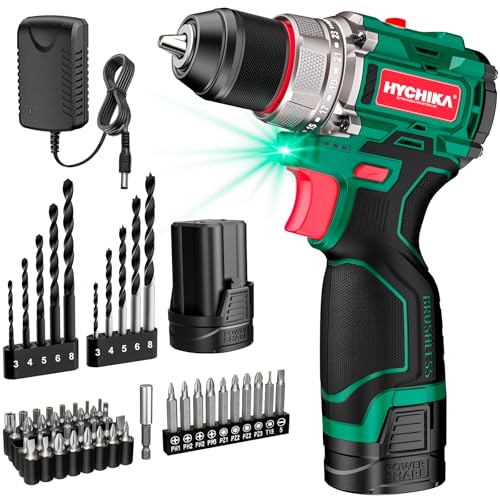.wp-post-image{display:block;margin:0 auto}
Quick Picks
- Best Overall: Hychika Drill — True, brushless, motor, more in a practical, easy-to-use package.
Product Reviews
Hychika Drill
This pick focuses on true, brushless, motor, more.
- Brushless motor runs smoother and needs less upkeep.
Comparison Overview
| Item | Hychika Drill |
|---|---|
| Rotation | — |
| Rear-Facing | N/A |
| Modes | Convertible |
| Install | — |
| Slim | No |
| Cleaning | N/A |
| Safety | Meets Standards |
Cordless Drill Vs. Corded Drill: Which Is Better for You?
Let’s talk tools. You’ve got a project brewing. Maybe it’s hanging shelves. Perhaps it’s assembling furniture. Or you might be tackling something bigger. Whatever it is, a drill is likely in your future. But which kind? The world of drills splits into two main camps. You have your corded drills. Then you have your cordless drills. Each has its own strengths. Each also has its own weaknesses. Deciding between them can feel a little tricky. We’re here to help clear things up. We’ll walk you through the differences. We’ll also help you figure out which one fits your needs best.
How We Picked
We looked at a lot of drills. We considered what makes a drill good for everyday use. We also thought about what makes a drill good for tougher jobs. We focused on user experience. How easy is the drill to hold? Does it have enough power? How long does the battery last? We also considered the price. You want a good tool without breaking the bank. We examined features like motor type. Brushless motors offer more power. They also last longer. We looked at torque settings. More settings mean more control. We also checked out battery technology. Lithium-ion batteries are lighter. They hold a charge longer. We read reviews from real users. Their experiences are invaluable. We want to guide you to a smart purchase.
Buying Guide
Let’s dive into the details. Understanding the core differences will help you choose.
Power Source Matters
Corded drills plug into the wall. They get continuous power. This means they don’t run out of juice. You can use them all day long. The power cord gives them unlimited runtime. You don’t need to worry about batteries. However, the cord limits your reach. You need an outlet nearby. Extension cords can help. But they can also get in the way. They can snag on things. They can also be a tripping hazard. For jobs far from an outlet, a corded drill is tough.
Cordless drills run on batteries. This gives you incredible freedom. You can work anywhere. You can go up a ladder. You can work in the backyard. You don’t need an outlet. The battery is the key component. Battery life is important. Most cordless drills use lithium-ion batteries. These batteries are lighter. They hold a charge for a long time. Some batteries can last for months. You’ll want to check the battery capacity. This is measured in amp-hours (Ah). A higher Ah means longer runtime. You might also want a spare battery. This lets you keep working. You can charge one while using the other.
Motor Type: Brushless vs. Brushed
Drills have motors. These motors drive the drill bit. Older drills use brushed motors. These have carbon brushes. These brushes wear out over time. They create friction. This friction generates heat. It also uses more energy. Brushless motors are newer technology. They don’t have brushes. This means less friction. It means less heat. Brushless motors are more efficient. They use less battery power. This gives you longer runtime. They also last much longer. They often provide more power too. A brushless motor can increase work efficiency. It can also prolong the tool’s life. For many tasks, a brushless motor is a big upgrade.
Torque and Speed: Control is Key
Torque is rotational force. It’s how much power the drill has. It’s measured in inch-pounds (in-lbs) or Newton-meters (Nm). Higher torque means you can drive bigger screws. It also means you can drill into harder materials. Many drills have adjustable torque settings. This is called a clutch. A clutch lets you set the torque level. This is very important. It prevents you from over-driving screws. It stops you from stripping screw heads. It also prevents you from breaking drill bits. For delicate work, you want low torque. For tough jobs, you need high torque.
Speed is also crucial. Drills have variable speed settings. This lets you control how fast the drill spins. Lower speeds are good for driving screws. Higher speeds are better for drilling holes. Some drills have two speed settings. Others have a variable speed trigger. This lets you adjust the speed on the fly. You








